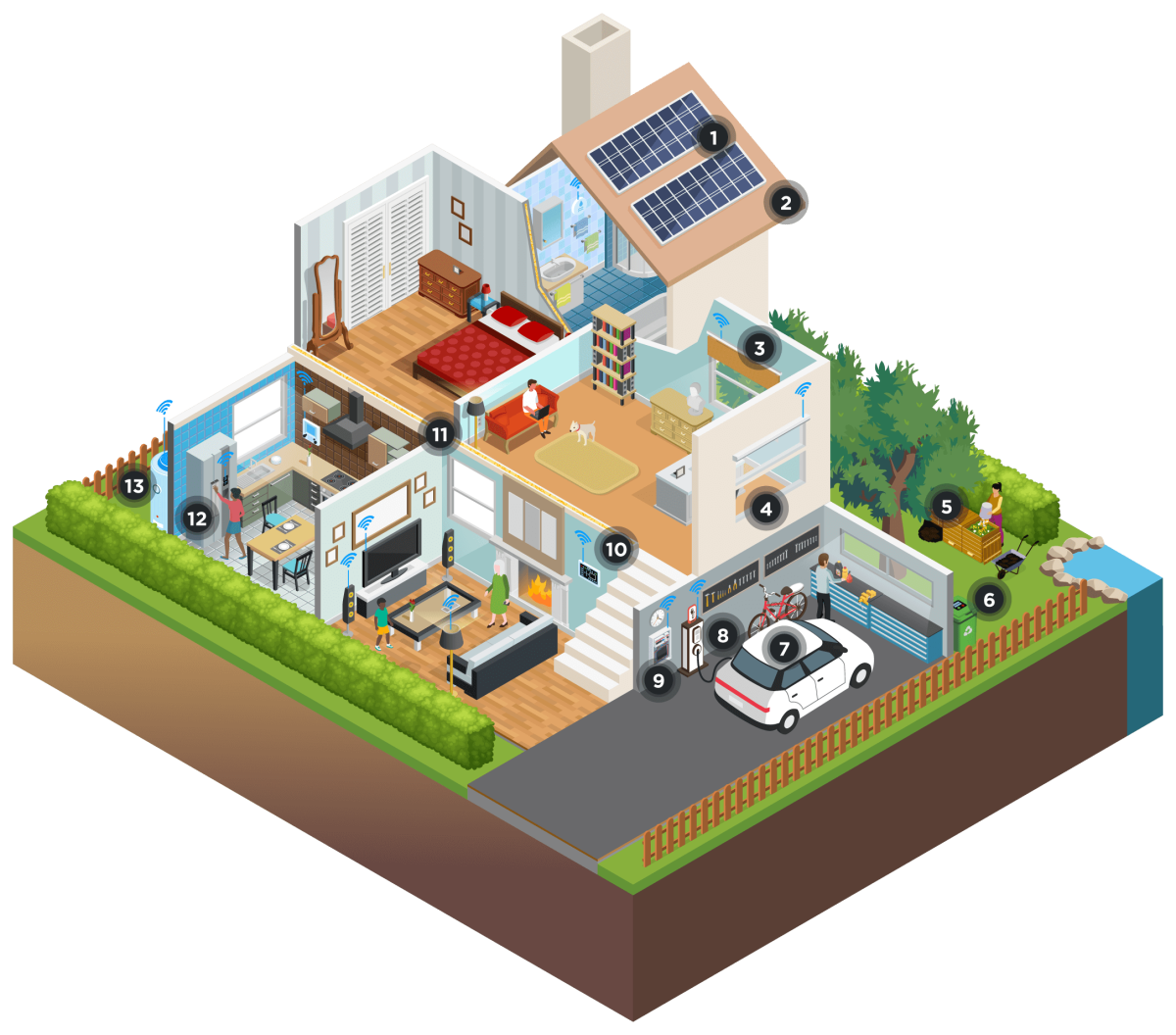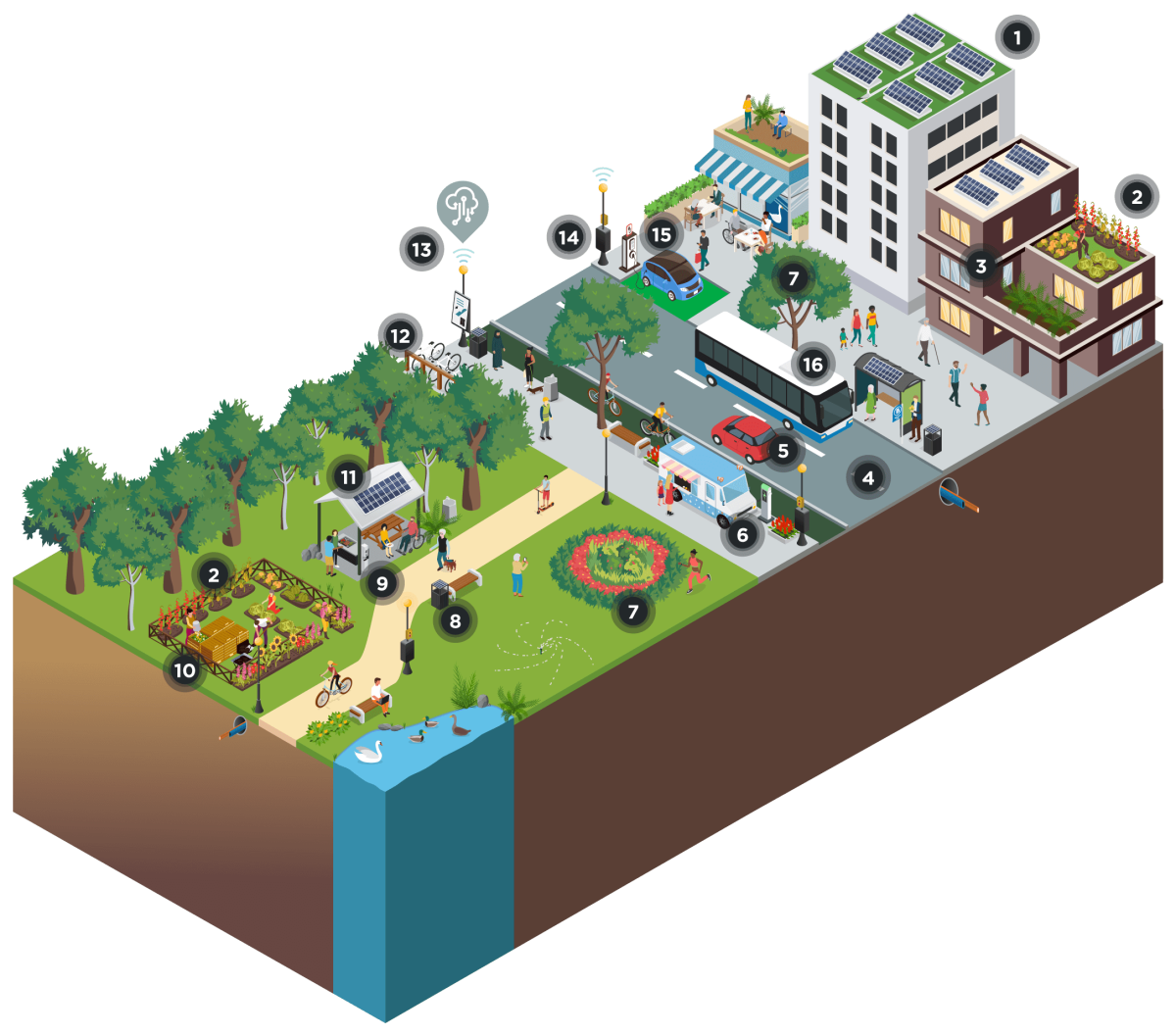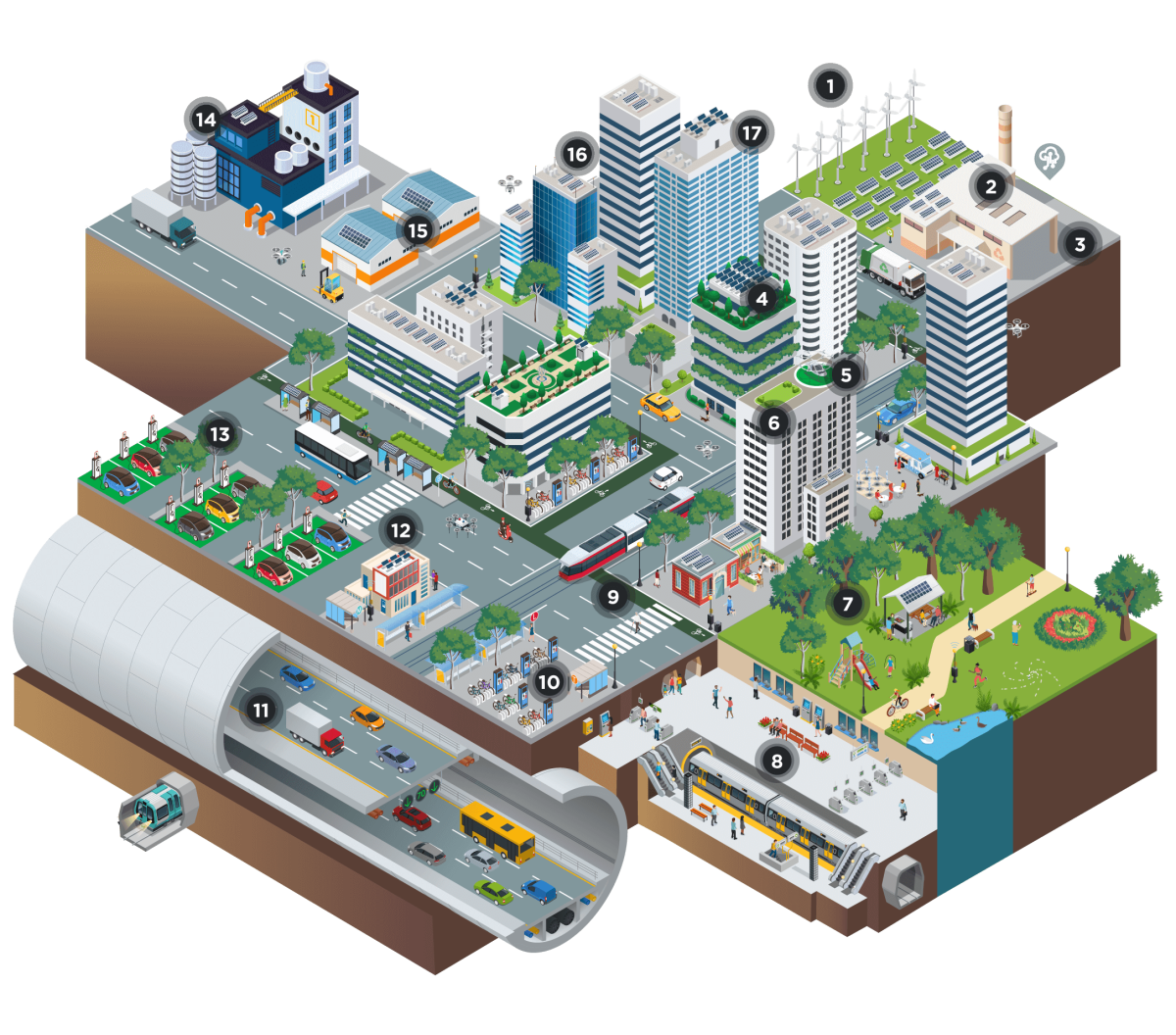Steps to achieve net zero cities
As an individual, a household, a community member or business, you can collaborate with us on delivering net zero cities. Learn more about the steps you can take.
Net zero at home
You can make small changes at home to help reduce your carbon footprint.
You can:
- choose locally grown produce whenever possible to limit transport emissions from your weekly shop
- assess your home using a Nationwide House Energy Rating Scheme (NatHERS) Scorecard. This will help you find ways to make your home more energy efficient.
- reduce, reuse, recycle, and repurpose as much of your household waste as possible.
Steps to reduce your home's carbon emissions
Refer to the numbers in the following illustration of a net zero home and the associated actions you can take to lower emissions.

Steps to take to reduce your home's carbon emissions
- Install solar panels, choose electrical appliances and a solar hot water system.
- Choose a light roof colour to reflect heat in summer.
- Upgrade door and window seals and use double glazing and window coverings to help keep your house warm in winter and cool in summer.
- Design your new home so you have lots of access to natural light, ventilation and airflow.
- Grow your own vegetables.
- Use your green bin or create a compost to reduce landfill.
- Use an electric car, e-bikes and e-scooters.
- Install a home battery to charge your electric vehicle/s and to store solar energy.
- Install smart water and energy meters to help you reduce your water and power use.
- Install smart home devices to operate air conditioning, lights and blinds.
- Use eco-friendly, non-toxic and renewable materials when building and renovating. Be sure to use good insulation.
- Install LED lights and consider energy efficient electric appliances (rather than gas).
- Use onsite greywater recycling, water tanks and water efficient appliances and fittings.
Net zero in your neighbourhood
Community members, community organisations, businesses and local councils can work together to reduce emissions as a neighbourhood.
Communities, councils, and businesses can:
- run community food swaps, markets, clothes swaps and garage sales
- support public transport, mobility-as-a-service options and car share schemes
- support and use electric vehicles, e-scooters and bike share schemes
- support active travel by providing supporting infrastructure.
Steps to reduce emissions in your neighbourhood
Refer to the numbers in the following illustration of a net zero neighbourhood and the associated actions you can take to lower emissions.

- Install rooftop solar panels.
- Build community gardens.
- Support the use of community batteries, rooftop solar, electric vehicle charging infrastructure and optimised electricity usage in communal areas.
- Use recycled materials in infrastructure projects.
- Support car sharing and micro-mobility options.
- Install community scale batteries and virtual power plants.
- Support tree planting and provide green public spaces. Use smart irrigation and water sensitive urban design to support green spaces and landscaping.
- Install smart bins for efficient waste disposal and materials tracking and data.
- Install solar hot water and heat pumps at community facilities.
- Deliver shared composting and recycling schemes.
- Install solar-operated street furniture and community facilities, with charging ports and free wi-fi.
- Build infrastructure to support active travel and micro-mobility, like end-of-trip facilities, protected lanes, bike racks, charging bays and air stations.
- Use sensors and smart solutions to gather data and operate public spaces more efficiently.
- Install solar powered, sensor-operated street lighting.
- Provide electric vehicle charging infrastructure.
- Provide emission-free, regular and reliable public and community transport options.
Net zero in your suburb or city
A collection of neighbourhoods, with a central business district and service infrastructure, come together as a precinct, suburb or city.
By joining forces, everyone living, working and visiting the city can play a role in achieving net zero. This impact can be much larger, involving city-wide infrastructure and circular economy opportunities at an industrial level.
Councils, government and businesses can:
- digitise service delivery
- generate and share data
- support innovation to reduce carbon emissions.
This can be achieved through:
- hosting innovation challenges
- fostering and funding pilot programs
- initiating research and development activities.
Steps to reduce emissions in your suburb or city
Refer to the numbers in the following illustration of a net zero city and the associated actions you can take to lower emissions.

- Plan for a distributed energy network and micro-grid.
- Deliver recycling facilities to reduce waste.
- Generate and share data on waste and materials use to support circular economy opportunities.
- Design new buildings with low embodied and operational carbon impacts, and with renewable materials that can be reused.
- Plan for drones and EVTOL (electric vertical take-off and landing) supporting future freight and logistics.
- Provide options for onsite management of organic waste.
- Deliver high-quality public and open space. Support these spaces with water sensitive urban design and smart irrigation.
- Deliver transit-oriented development and efficient public transport links around public transport hubs.
- Build connected active transport and micro-mobility paths and infrastructure, like bike racks, charging bays and air stations.
- Install e-bike charging stations.
- Plan for multi-use tunnels, such as underground highways and transit lanes, to shift cars and trucks away from local streets, to encourage more pedestrian and active transport travel.
- Deliver accessible end of trip facilities.
- Deliver full integrated electric vehicle charging network.
- Integrate water cycle management, including urban wastewater heat-recovery.
- Encourage co-location of complementary companies - where the waste from one company can be used as raw materials for another.
- Capture and convert heat from data centres into power for surrounding buildings.
- Fit buildings with sensors and connected technologies to be responsive and support predictive maintenance.
Read about the Net Zero Cities Action Plan.